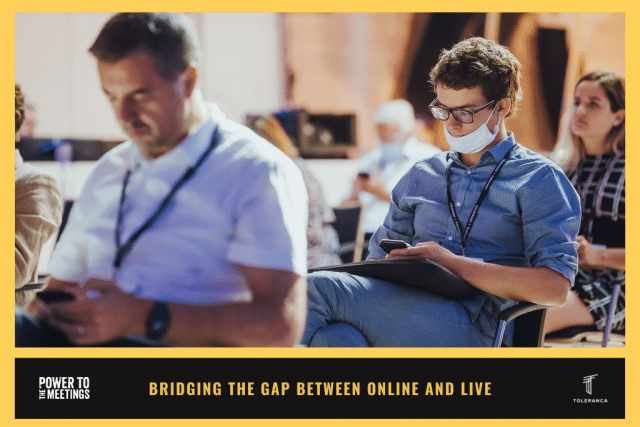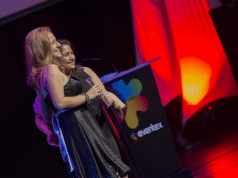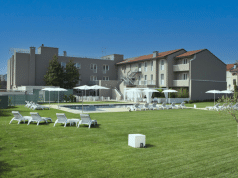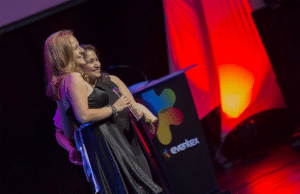How to bring equal satisfaction for online and live attendees with your hybrid event?
This is probably the most important question when organising a hybrid event. And probably quite a daunting one for some. The first thing that comes to mind is the word PHYGITAL, which is actually just another word for hybrid events. The formula is simple: physical + digital = phygital. Translated into the language of hybrid events, we combine a live event with video conferencing systems and applications into a memorable interactive experience for attendees.
This is the main task and challenge for all of us who organise hybrid events. As the hybrid model is new for both organisers and clients, we face many questions and dilemmas along the way. Nevertheless, experience provides most of the answers. We have therefore compiled practical experience from our events into ten points to help us bridge the gap between two types of very different participants.
The first and basic prerequisite for both audiences is top-quality and interactive content. Without it, everything that follows will not succeed. In fact, content drives most of the points below.
1. Choosing the right video-conferencing platform
When it comes to choosing video-conferencing platforms, there is no one solution that will fit all your needs. There is almost always something missing, and it often comes with high additional costs. Hybrid conferencing can be very complex, so it’s important to choose a solution that also works as a conferencing app and supports your specific requirements, such as speed dating and the like, but also allows you to brand the event appropriately.
2. Video quality
Quality is important when it comes to online video streaming, and this is especially true for the quality of the audio. Online participants will never forgive us for poor sound. The expected standard today is HD quality (min. 1080p) and attractive framing that will keep the online audience connected. Bad lighting, image loss due to poor internet connection, background noise and similar errors will quickly drive online audiences away from your event.
3. Live chat
Live chat is now one of the basic features of any serious video-conferencing platform. It is often enhanced with a Q&A function that publicly highlights key questions from participants. Of course, this feature should be accessible to both the online and the live audience. This is most easily solved via a mobile event application. Consider the integration of solutions such as Slack, Google Chat, etc.
4. Hybrid Wall
The once popular projection of Twitter comments on Twitter Walls is now being replaced by projection on a Hybrid Wall. Chatroom activity, poll results or notes are highlighted on the screen through different interfaces. There are many possibilities, from very simple solutions to complex programmes that allow the integration of different communications related to an event. For example, walls.io, tagboard.com, everwall.com, …
5. VOD (Video on demand) and presentations
When attendees of a physical event are on a coffee break or working lunch, the online audience also needs to be offered a relevant experience. There are several options, but most of the time we offer them content on demand that we record in advance. We can also play around with pre-sending “gadgets”, perhaps coffee mugs, desserts, etc. This is also an area that allows you to monetise and actively engage your sponsors.
6. Matchmaking
Facilitating online meetings is another way of connecting the two audiences. There are many variations, ranging from simple chat rooms to complex systems for setting up video meetings in advance. Such functionality is increasingly becoming a standard that participants expect in a package, along with integration into various online calendars.
7. Conference rooms
Most videoconferencing systems allow the opening of virtual conference rooms. Within the rooms you can connect online and live audiences. Conference rooms were pioneered by Zoom and are now offered by most platforms. They have the advantage of being a very good substitute for coffee chats at live events and are a simple form of networking. Participants should not be left to their own devices, each group should have a moderator and a topic to discuss.
8. Connecting via social networks
One of the simplest techniques to connect two communities is through social networks. For this purpose, you need to support the event with the appropriate keywords. From experience, a social media moderator is also needed to encourage quality communication between participants. In practice, it has been shown that the principle of less is more should be followed when selecting social networks.
9. Surveys, questionnaires, voting
Surveys, votes and online questionnaires are welcome facilitators of interaction. We use Slido at our events, which has proven to be a very reliable and robust system. It is very easy to integrate into different platforms and is now an integral part of Zoom. In our experience, for this type of activation, you must have a web moderator with specific moderation skills.
10. Gamification
Prize draws and raffles are an extension of simple questionnaires and surveys. In our experience, simple games that are also integrated into the mobile app are the most effective. This way, all participants will have access to the game. There are many options, ranging from virtual escape rooms, virtual treasure hunts to simple raffles or wheels of fortune. There are many providers of such games e.g. Loquiz, Pointgram, Socialpoint etc.
In addition to what we’ve mentioned above, it is also important to check the venue, and be sure to test everything in advance. We recommend that you test your hybrid system on a small group of participants. Plan A and B, and even C, is extremely important in the case of hybrid events.
Most importantly, you should thoroughly immerse yourself in the experience of both groups of participants and look for points of contact. The more you understand the target group, the more successful your event will be. A practical test of success will be seen in the reactions of the participants. When they convert from passive listeners to active participants, you are on the right track. In hybrid events, you can also back this up with in-depth analytical data.














